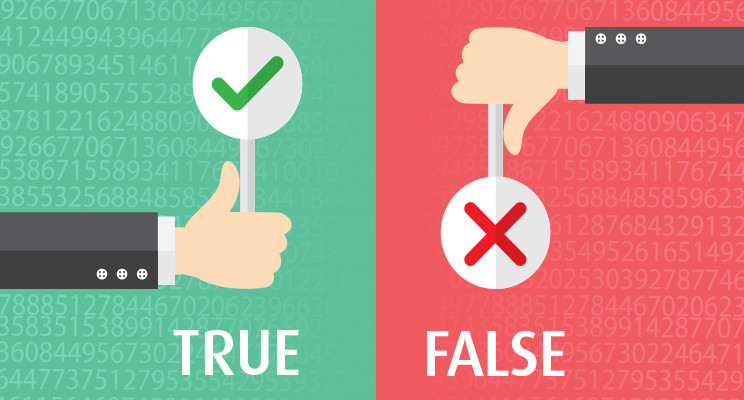
“You can prove anything with data.” True ? False?
Not long ago, I got together with a friend of mine who’s now a big data scientist at a major retailer. As we reminisced about our early days together at the @UWaterloo Faculty of Mathematics, we both flashed back to a specific essay we had to write based on this thesis:
“You can prove anything with statistics.”
Now that’s a tricky statement. Or at least it felt that way at the time. Honestly, it scared me… I didn’t know what they wanted me to argue. Did they want me to make the case that, “The data is so powerful that if you analyze it really well, you’ll have all the answers you need.”? Or was it that, “If you know how to manipulate your data, you can have the data prove any point you want it to prove.”?
These are questions that still linger in my mind today, especially in this age of big data. It seems many people may indeed rely too much on the premise that “statistics prove everything” without fully understanding what the numbers mean. Data is a powerful tool, yes, but today data is too often used incorrectly, because there’s so much of it and it’s so easily accessible. This sheer volume of data can become easily overwhelming, so much so that it can scare some people away from really digging deep into it. Ultimately, it becomes easier to quote some numbers and seem “smart”. Critical thinking seems to have gone by the wayside.
So how do we get to the truth behind the data?
There are three steps when using data to make decisions in today’s business world, each essential to making a fully informed decision.
Step #1: Analyze and ask: Does this really make sense?
Step number one is conducting a true analysis of the results. Bring your data scientists together with your business team and make sure everyone has the complete context of why the questions are being asked in the first place. Once the analysis is done, we can use our collective common sense to question what the data is telling us and ask, “does this really make sense?” That’s why critical thinking is so important. Even Hermione Granger from the Harry Potter books, at the age of 10 or 12, questions causality and correlation. So why do we so often forget to do that in our grown-up day-to-day work?
Step #2: Talk to your team – and those in the “real world”
Now it’s time to look at other sources of data, which leads me to step number two: gathering anecdotal data. Get up from your desk chair and away from the dashboards and spreadsheets. Talk to your team, to your peers, to your customers, to your contact centre. A vital source of anecdotal data are your front-line people, those who engage with the customer on a daily basis, far away from detached head office towers. I often find that if I spend the time with the front-line teams, I can get 90 percent of the answers; if I listen to well, their insights will help put the meaning of the excel tables into a real-world framework.
Step #3: Trust your gut – you’ve earned that right
Step number three is perhaps the most important step of all – and that’s gut instinct.
Data can inform you – and keep you from going into a situation blind – but most leaders will tell you decisions are a 50/50 prospect. Fifty percent data, fifty percent gut. Yes, analyze the data and talk to your team, but as a decision maker, you have to make your move based on your gut.
Gut instinct comes from experience; learning through trial and error to discern the things that numbers don’t always support. Gut instinct can make you do the exact opposite of what the data tells you to do. For example, when facing difficult trade-offs, that can feel like a lose-lose propositions.
In the end, validation of data is a three-step process – from data, to brain (or the collective brains of your team, both left-side and right-side), to your own gut.
So, when I think back to that statement from my university days – “You can prove anything with statistics” – today, I’d have to say, yes, you probably could. But you probably shouldn’t.
What does your gut tell you? Can you prove anything with statistics? And how do you approach big data? Let me know in the comments below.



Adviser to Marketing Research and Client Organizations
4yI use statistics as a 'highlighting tool'. It is human's ability to recognize patterns, evaluate the findings in context and to evaluate their relevance that converts data into actionable marketing strategies.
Lies, damned lies, and statistics. Great post -- it really resonates. True leadership requires the courage (and faith) to make tough decisions. Data can certainly help bolster courage - but without stepping back and doing the 3 things you mention here, you're at risk of falling prey to the dark side of data manipulation.
Global marketing and communications leader | Story collector, curator, teller | Creative thinker | Content strategist | Passionate about: CX, leadership, inclusion, neurodiversity, innovation, social justice
4yGreat piece, Maja! I completely agree that any data/statistical analysis should be supplemented (augmented!) with human insights, experience and common sense. I see a clear parallel with the current AI landscape as it heats up - how we now realize so much of its value comes from (tapping into) the interplay between machine and human. Thanks for the insightful post!
Pursuing a Master's Degree at Harvard Graduate School of Education | Principal Product Manager at Microsoft
4yGreat article. I think I had almost the exact same assignment during a math course at UW using text _How to Lie with Statistics_ https://en.wikipedia.org/wiki/How_to_Lie_with_Statistics